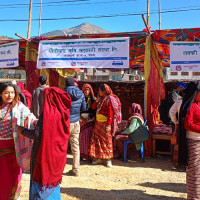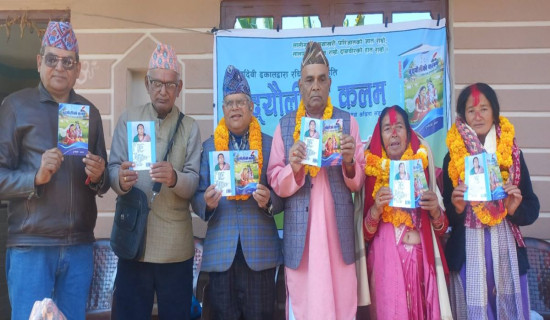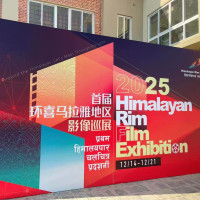- Monday, 15 December 2025
The Open Coffin
Marvin walked away from the happenings in his city. Nobody knew where he went. The newspapers were silent about him. The place where he worked was a cemetery. He was the guard at the cemetery gate. He used to prepare the list of the dead and bury them accordingly. The village of Prata was a busy village. People worked throughout the day at the market. They sold goods, and there was a line of coffin makers in the bazaar. Marvin had heard that souls disappear, and now he himself had gone out of touch. The name lists of the dead were increasing, and he was nowhere to be found. If the cemetery were closed, the dead would have no abode to rest in peace. This worried the villagers.
The gateway to any life is the soul. It is also what needs the cleansing. Marvin had left behind a note in his room. It was written on it, “Is life a gift?”
The villagers gathered under a large banyan tree. It was the afternoon hour, and the clock was striking thirteen. The relatives of the dead people did not contact any coffin makers because they moved to the next village to bury the dead. That was how the dead did business with the living in the village of Prata. That was all happening in the ghostly afternoons. People were somehow scared of the night because the night was a mystery without Marvin.
In the discussion it occurred to the village head that the former dead should be dug out and the newly dead should be buried in their place—this was the weirdest idea that came out of the village head. The village head thought that he saved the space for the dead. Marvin had a friend called Dido, and Dido did not like the idea. The village head assigned Dido to contact Marvin, but Dido was unsuccessful except for finding that note in Marvin’s house.
Marvin let out an extreme shriek of laughter when his guru told him that the dead can be brought to life. Marvin thought there was no need for his job at the cemetery if the dead can be brought to life. Everybody would be alive anytime. Marvin was all set to find the answer to this quest—he somehow had already understood by this time that death was necessary.
Marvin and his crow travelled together. The crow would sit on his shoulder. Marvin was seeking to talk with death. Marvin had always thought that death would be a person—but it turned out that death was a philosophy. Marvin heard the philosophy of death by the holy people. He set out to meet every ascetic—he met a few of them on his way to the cave. Marvin felt a deep quest to know where the dead went—and for that he got his answers from the living ones. It took time for Marvin to understand that death was unavoidable and it was as holy as life. Some poets told him that when the circle of life meets, one reaches the state of celebratory and accepted death.
So, Marvin was learning, and he took some time out of his life to understand death and its philosophy.
Marvin met the Aghoris, who kept the skull of a person and considered it holy. Marvin spent some time with them, and he learnt about Maya, Moha and Mokshya.
So, Marvin decided to return back to his village. He decided to quit burying dead ones at the cemetery. The village head again interrupted. He did not like the idea of Marvin quitting burying the dead. Marvin and his crew had seen a lot outside of the village—they saw a Sadhu worshipping the dead skull—death was called Mokshya. Marvin felt like he was resurrected from the dead. He felt like he got his life back—but from the dead. Marvin would sit beside the cremation fire, and he would see the priests performing the act of chanting mantras and honouring the dead ancestors. Marvin felt death was holy and we should do our karma. The dharma of death was its Mokshya. Marvin grabbed the concept because his background as a cemetery gatekeeper helped him to satisfy his thirst for meaning in death.
The ritual of honouring the dead ancestors was prevalent among the Hindus. They did Shraddha every year in the name of their dead ancestors. Marvin saw the priest doing a puja for remembering the dead. It was all pious—to die was to be remembered.
Marvin went to the coffin shop in the bazaar, and he called the owner. Marvin asked him to leave making coffins and honour death. Death meant freedom for Marvin, and he considered it to be pious from now on. The village head liked Marvin’s idea of not making the coffin, but that would result in rotten dead bodies all over the village because the dead would not be buried. Marvin was called to the house of the village head.
“How do you plan to handle the dead ones?” the village head enquired.
Marvin was speechless; he had no idea.
He started thinking, and he said, “I will find this answer too.”
Marvin thought to ask the dead how they would like to be treated.
But this was a deep contemplative state in which Marvin was deeply drenched. Marvin was deeply moved, so he went to the village of Mokshya to meet their village head. The village head of the village of Mokshya was a religious man. He was the priest of the dead. He felt that Marvin honoured death, so he suggested that Marvin continue his job. The village head of the village of Mokshya and Prata talked with each other. They finalised that the dead should be honoured and people die fighting for a good cause too, and that every day many young and innocent people die.
After hearing the talks of these village heads, Marvin felt that those who develop nuclear weapons should not do so, and no one has the right to take away the life. Life is an open coffin. The dead should not be thought to have lost something unique. The world is an open laboratory, and people need to reflect on the deeds of the dead when they were alive. Their contributions needed to be analysed—that way the dead never die, and the coffin of death will forever remain open.
Marvin thought fiction lives on, the world lives on and memories keep following us. He read the paradox of life in the poem of William Wordsworth which said, “The child is the father of man.” Man keeps on remembering his childhood, and the childhood is never dead in the whole circle of life. The closed coffin teaches us that life is an open coffin. Such is the fate of death that makes us want to contribute from our side; we keep on living in history and culture and studying about life and death.
In Nepali story, death came as a Sepoy from heaven and got locked inside a tree cave by a boy—people stopped dying, and the world got overpopulated. Marvin studied that story and came to know how God himself had to descend down to free the Sepoy. Marvin’s version of life was about understanding death. Different myths and legends regarding death appeared before him—that gave him shivers down his spine.
One night Marvin was listening to the song Fear of the Dark by Iron Maiden. He felt shivers in the dark. He was walking near the cemetery. The gate was closed, and the moon seemed to be howling in the dark. The wolves were howling at unseen distances too. As soon as Marvin opened the gate of the cemetery which had been locked for many months, the bats flew out in large groups from the open gate, and Marvin really felt that life was an open coffin. He continued his job at the cemetery.
(The author is a lecturer of English.)
















